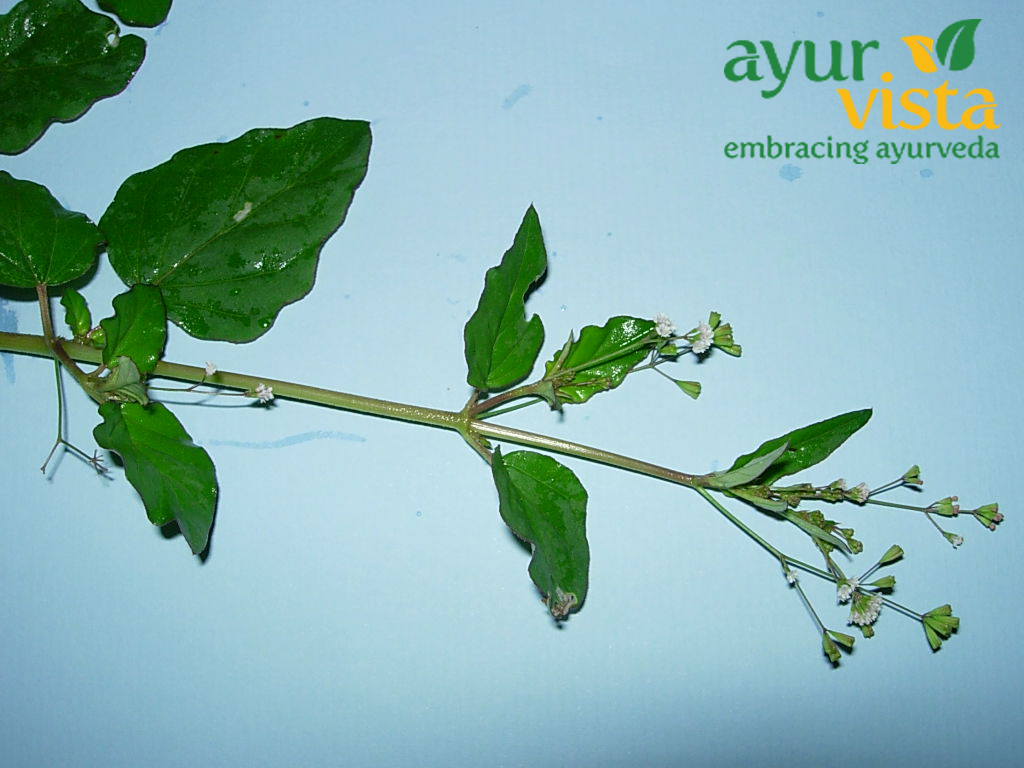Boerhavia diffusa Linn.
Synonym B. repens Linn.
B. procumbens Roxb.
Family Nyctaginaceae.

Habitat ‘ Throughout India as a weed.
English Horse-pursiane, Hogweed.
Ayurvedic Rakta-punarnavaa,
Punarnavaa, Katthila, Shophaghni, Shothaghni. Varshaabhu (also
equated with Trianthema portulacastrum Linn., which exhibits
anti-inflammatory, antipyretic and analgesic activity).
Unani Itsit, Bishkhaparaa.
Siddha/Tamil Mookkirattai.
Folk ‘ Gadaha-purnaa.

Action Diuretic, anti-inflammatory, antiarthritic, spasmolytic, antibacterial (used for inflammatory renal diseases, nephrotic syndrome, in cases of ascites resulting from early cirrhosis of liver and chronic peritonitis, dropsy associated with chronic Bright’s diseases, for serum uric acid levels). Root—anticonvulsant, analgesic, expectorant, CNS depressant, laxative, diuretic, abortifacient.
Key application As diuretic,
hepatoprotective. (Indian Herbal Pharmacopoeia.)
B. repanda, synonym B. chinensis Linn., roots exhibited antihepatotoxic activity against carbon tetrachloride galactosamine -and paracetamolinduced intoxication in rats. Powdered root gave encouraging results in spermatorrhoea and leucorrhoea. The chloroform and methanolic extracts of the roots and aerial parts of B. dffusa also exhibited antihepatotoxic activity against carbon tetrachlorideinduced intoxication in rats.
Punarnavaa is official in IP as a diuretic. The diuretic action of the drug is attributed to the presence of xanthone, beta-ecdysone. Flavonoid, arbinofuranoside, present in the drug, was found to lower serum uric acid in experimental animals, as also in humans.
Punarnavaa has been reported to increase serum protein level and reduce urinary protein extraction in clinical trials in patients suffering with nephrotic syndrome. The activity is attributed to the presence of rotenoids in various parts of the plant.
An antifibrinolytic agent, punarnavoside, has been found to stop IUCD-induced bleeding in monkeys. The drug contains quinolizidine alkaloids.
Dosage Whole plant—12—24 g for
decoction (API Vol. I); root—2—3 g
powder; 15—30 ml fresh juice.

